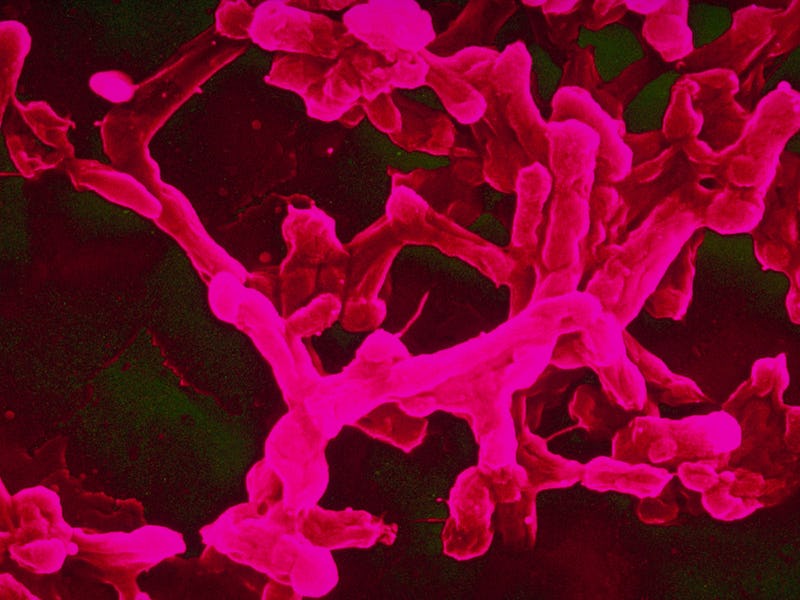Will Robots Have Bacterial Brains?
It might sound unsanitary, but the future of automatons may not be mechanical.

Robots and bacteria are central to their own corners of the scientific world, but they don’t frequently work in concert. That may change as programming and chemistry take an interest in each other.
Case in point: An Air Force-funded study published today demonstrates how bacteria can control the behavior of inanimate electronic devices. The results are just conceptual, borne out of a mathematical model developed by Warren Ruder, a biological systems engineer at Virginia Tech. But they point to the ways in which bacteria could be used to build a living microbiome on a robotic host that could be manipulated to specific ends.
So, what the hell good would it be give a robot a brain made of bacteria??
Actually, it turns out there are quite a few real-world applications for this technology. Ruder’s own research is in developing robots that can read bacterial gene expressions in E. coli, which — besides being a pathogen — is one of the most important organisms for biological research. He needs those robots to be able to respond to bacteria in specific, controlled ways; these findings are one step further in confirming that something like that is possible.
This kind of work has ramifications in learning more about soil bacteria and livestock interactions in agriculture, the effects of gut microflora in human health, and perhaps in using robots to clean toxic environments caused by oil or other chemical substances.
This is just the first step in really digging into research that combines synthetic biology with robotic circuitry and electronic devices, but it’s a reminder that what we typically think about robots could be radically different in the future — even just a few decades from now. They might not have a heart of gold, but they might very well have brains that are — technically — alive.